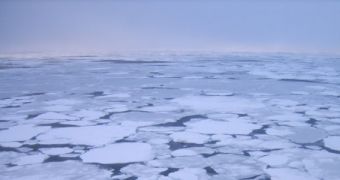When the European Space Agency (ESA) launched the Soil Moisture and Ocean Salinity (SMOS) spacecraft, experts were planning to measure those two factors primarily. However, recent datasets from the satellite indicate that it can also keep track of sea ice thickness around the poles.
The instruments aboard the vehicle are apparently capable of measuring precisely how thick ice in the Arctic or near Antarctica is. This is yet another remarkably useful skill that experts discovered SMOS has. After so much success, this mission will probably receive a successor when it comes to an end.
“Sea ice that is less than 50 cm thick is particularly important for weather and climate as it controls the exchange of heat between the ocean and atmosphere. This new information from SMOS will be very useful in monitoring ice as it grows in the winter and recedes in the spring,” says professor Kaleschke from the University of Hamburg’s Institute of Oceanography.
From now on, ESA experts will continue to put SMOS to work in this field of study, and also try to find out whether there are other things the satellite can do that they had no idea about.

 14 DAY TRIAL //
14 DAY TRIAL //